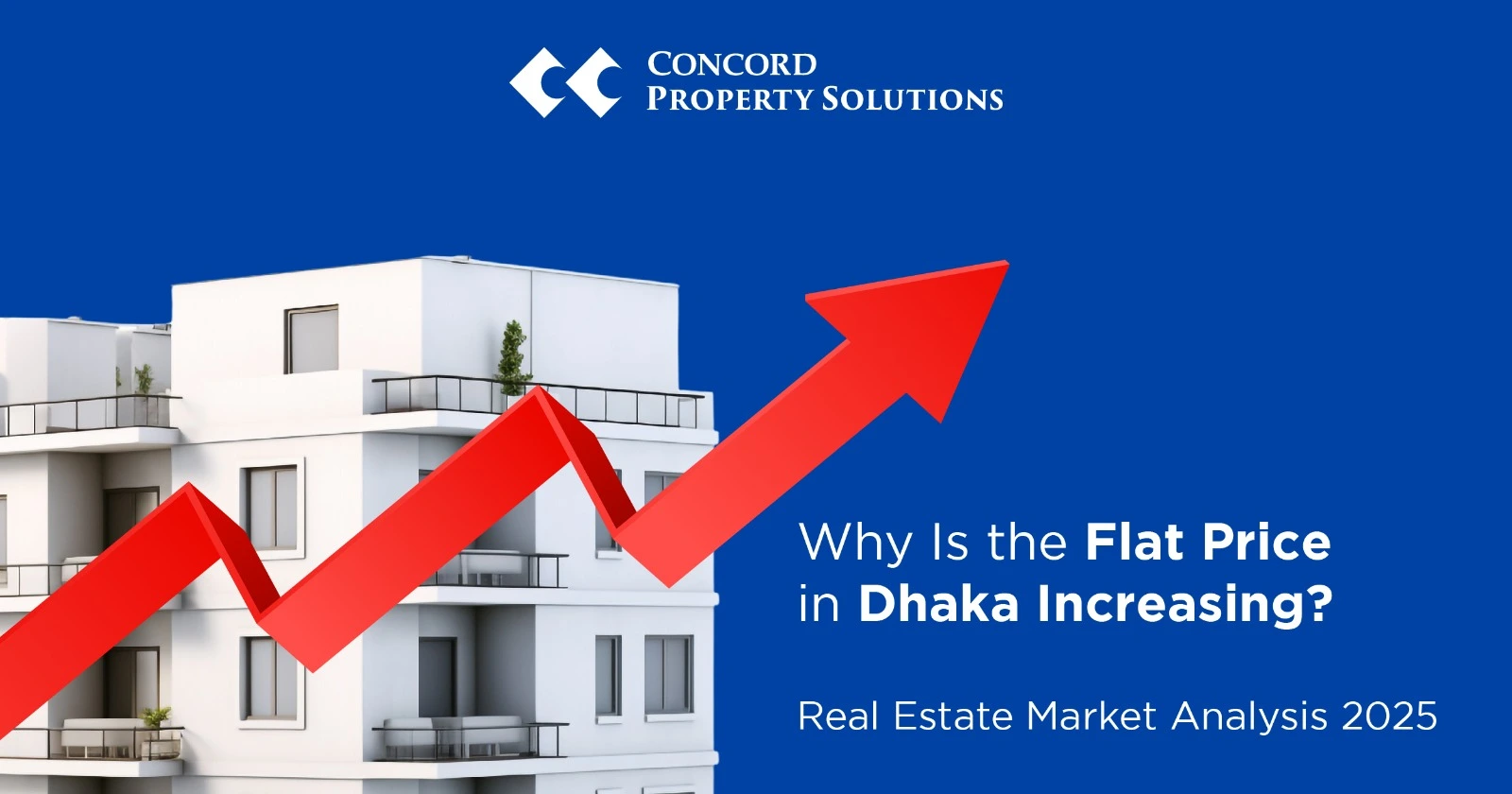In the ever-evolving skyline of Dhaka, the price of a flat today is no longer what it was even a few short years ago. Every new tower that rises seems to take the cost of homeownership a little higher with it.
But why exactly are flat prices in Dhaka climbing in 2025? And what does this mean for buyers, sellers, and investors?
Let’s dive into a full, easy-to-understand analysis of the real estate heartbeat of Bangladesh’s capital city.
Flat Prices in Dhaka: A Snapshot
In 2025, flat prices across Dhaka vary dramatically based on location, build quality, and amenities. When you are looking for an apartment, here is an expected range of prices you can expect from different locations:
| Location | Average Price Per Sq Ft (BDT) |
| Gulshan & Banani | 22,000 – 30,000 |
| Baridhara | 18,000 – 25,000 |
| Dhanmondi | 14,000 – 20,000 |
| Uttara | 6,000 – 12,000 |
| Bashundhara R/A | 7,000 – 14,000 |
| Mirpur | 5,000 – 9,000 |
Prices are rising across nearly all areas, with prime zones like Gulshan and Baridhara witnessing the sharpest hikes. However, check out our guide if you are looking for neighborhoods with low-priced flats in Dhaka.

Why Are Flat Prices in Dhaka Rising?
We have found the top 5 reasons.
Let’s break it down:
1. Rapid Urbanization & Population Explosion
Every year, Dhaka welcomes thousands of new residents—from young professionals chasing jobs to families seeking better futures.
- Annual population growth: 3%
- Estimated city population by 2025: Over 24 million
This unrelenting demand for homes fuels competition, pushing prices higher. As more people flock into the city, the housing stock struggles to keep up.
2. Limited Land, Endless Demand
Think about it:
- Land is a finite resource.
- Dhaka is already densely packed.
- Every new project needs to “build up,” not “spread out.”
As landowners and developers fight for the few remaining prime plots, the cost of land skyrockets—and that cost inevitably gets passed down to the buyers.
3. Rising Construction Costs
Building a flat today is far more expensive than it was even two years ago.
Here’s why:
- Construction costs jumped by 20 percent in 2024.
- The price of building materials reached 5.96 percent in 2024.
- Skilled labor wages have gone up due to higher living costs.
As a result, even basic apartments cost significantly more to develop, which in turn increases sale prices.
4. The Rise of Luxury Living
Today’s luxury buyers don’t just want a “flat”—they want a lifestyle:
- Infinity pools
- Rooftop gardens
- Home automation
- Fitness centers
- Concierge services
Developers are competing to offer luxury features to a growing middle- and upper-class market. Naturally, all these extras come with a premium price tag.
5. Government Policies and Higher Taxes
Policy changes in the real estate sector have also nudged prices upward:
- Increased registration fees
- Higher property transfer taxes
- Stricter compliance and approval requirements
While these moves aim to formalize the industry and improve transparency, they also make the cost of buying a home steeper for buyers.
What Does This Mean for Buyers and Investors?
For Buyers: A Race Against Time
If you are a homebuyer, the reality is simple:
- Waiting longer might mean paying more later.
- Suburban areas like Uttara, Purbachal, Keraniganj, and Savar offer more affordable options for first-time buyers.
Affordable projects are gaining popularity, and many middle-income families are focusing on up-and-coming neighborhoods.
For Investors: An Opportunity to Ride the Wave
Despite higher prices, real estate remains a stable and appreciating asset.
Properties in prime areas continue to show capital gains of 8-10% annually, making Dhaka one of South Asia’s promising real estate investment hubs.
Rental yields are also healthy, especially in areas close to commercial districts and embassies.
Future Outlook: 2025 and Beyond
Experts predict that flat prices in Dhaka will continue to climb, driven by:
- Megaprojects like Metro Rail, Elevated Expressway, and Purbachal Expressway
- Expansion of suburban housing developments
- Foreign investments in high-end real estate
However, the government is also planning initiatives focused on affordable housing to create a balance in the market.
The key takeaway?
Now is a good time to buy, especially if you’re looking at fast-developing areas or planning for the long-term.
Final Thoughts
The dream of owning a home in Dhaka is evolving, but it’s still very much within reach, with smart planning, right timing, and informed decision-making.
Whether you’re buying your first flat, upgrading your lifestyle, or investing in real estate, understanding the reasons behind price movements can help you make better choices.
At Concord Property Solutions, we believe in empowering you with the knowledge and tools to make your homeownership dreams a reality. Partner with us for more market insights and a smooth journey to your goal.
Frequently Asked Questions (FAQ)
Which areas in Dhaka are seeing the fastest rise in flat prices?
Prime areas like Gulshan, Banani, Baridhara, and Dhanmondi have seen the sharpest price increases. However, suburban areas like Uttara and Bashundhara R/A are also experiencing steady growth.
How much does a flat cost on average in Dhaka in 2025?
In 2025, flat prices range from BDT 3,500 to BDT 16,000 per square foot, depending on location and amenities. Premium areas like Gulshan can go as high as BDT 30,000 per square foot.
Is it still a good time to invest in Dhaka real estate?
Yes. Despite rising prices, Dhaka’s real estate market offers solid returns, especially in prime and fast-developing suburban areas. Capital appreciation and rental yields remain attractive for investors.
Are construction costs affecting flat prices in Dhaka?
Absolutely. The rising cost of building materials such as steel, cement, and tiles, combined with higher labor costs, have significantly increased overall construction expenses, leading to higher flat prices
